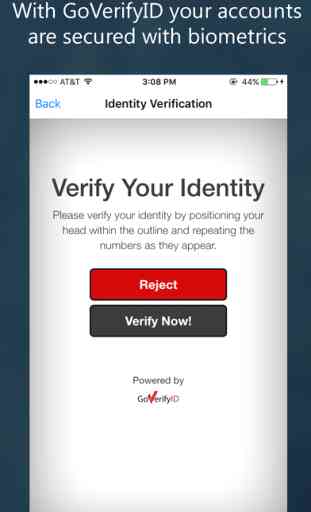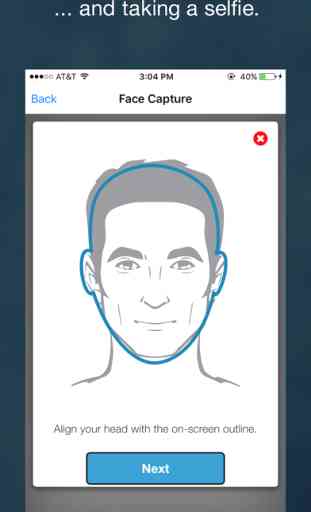GoVerifyID for EMEA
Regional Versions of GoVerifyID
ImageWare provides different versions of GoVerifyID for use in specific geographic regions. This allows organizations to select the version closest to their systems, in order to reduce internet latency. This also allows organizations to select the version that stores the biometric data within their region for privacy concerns. You need to use the GoVerifyID version that your organization has selected for your use.
GoVerifyID for EMEA is a version of ImageWare's mobile biometric authentication application created specifically for customers in Europe, the Middle East, and Africa. This version of the application provides the fastest communication for companies that are located in Europe, the Middle East, and Africa, by utilizing cloud servers based within the European Union. This version stores the biometric data within the European Union region for organizations that need to abide by EU privacy regulations.
GoVerifyID is a biometric authentication application used by businesses—such as banks, secure websites, and the healthcare industry—to protect customer assets and personal information. Using a customer's unique attributes such as their voice print or facial contours, GoVerifyID provides businesses and their customers an unprecedented level of security and asset protection.
GoVerifyID operates through a secure portal that is completely external to the business website, and returns only user authentication success or failure results to the primary website. Customer biometric details are never tied to their personally-identifying information, adding another, out-of-band level of security.
When a business detects potentially fraudulent activity, the customer is sent a notification on their registered mobile device. The customer can consent to the alerted activity by providing matching biometric details such as a spoken passphrase or face match, or reject the activity as fraud.
Even if a fraudulent user had access to the registered mobile device, they cannot provide the correct, matching biometric authentication for any protected activity.
ImageWare provides different versions of GoVerifyID for use in specific geographic regions. This allows organizations to select the version closest to their systems, in order to reduce internet latency. This also allows organizations to select the version that stores the biometric data within their region for privacy concerns. You need to use the GoVerifyID version that your organization has selected for your use.
GoVerifyID for EMEA is a version of ImageWare's mobile biometric authentication application created specifically for customers in Europe, the Middle East, and Africa. This version of the application provides the fastest communication for companies that are located in Europe, the Middle East, and Africa, by utilizing cloud servers based within the European Union. This version stores the biometric data within the European Union region for organizations that need to abide by EU privacy regulations.
GoVerifyID is a biometric authentication application used by businesses—such as banks, secure websites, and the healthcare industry—to protect customer assets and personal information. Using a customer's unique attributes such as their voice print or facial contours, GoVerifyID provides businesses and their customers an unprecedented level of security and asset protection.
GoVerifyID operates through a secure portal that is completely external to the business website, and returns only user authentication success or failure results to the primary website. Customer biometric details are never tied to their personally-identifying information, adding another, out-of-band level of security.
When a business detects potentially fraudulent activity, the customer is sent a notification on their registered mobile device. The customer can consent to the alerted activity by providing matching biometric details such as a spoken passphrase or face match, or reject the activity as fraud.
Even if a fraudulent user had access to the registered mobile device, they cannot provide the correct, matching biometric authentication for any protected activity.
Category : Business

Related searches




